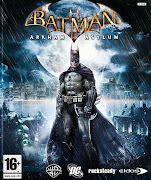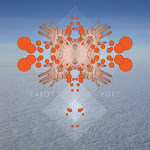 Today I was reading these articles about “Melodrama” storytelling type within video games and how most all games use this style tell it’s story; I found this really interesting topic as I’ve never really thought about games storytelling style because he comes to a topic like this I always think about how to tell certain stories/themes through a gameplay style (mechanics/game design ideals). Here are the two links and I truly recommend reading these two articles they opened up my mind to some new knowledge about storytelling and how “Melodrama” is used in games.
Today I was reading these articles about “Melodrama” storytelling type within video games and how most all games use this style tell it’s story; I found this really interesting topic as I’ve never really thought about games storytelling style because he comes to a topic like this I always think about how to tell certain stories/themes through a gameplay style (mechanics/game design ideals). Here are the two links and I truly recommend reading these two articles they opened up my mind to some new knowledge about storytelling and how “Melodrama” is used in games.http://www.brainygamer.com/the_brainy_gamer/2008/06/we-do-melodrama.html
http://www.educationarcade.org/SiDA/melodrama
Here I quote from Brainygamer article describing what “Melodrama” is:
“Melodrama: the triumph of moral virtue over villainy, and the consequent idealizing of the moral views assumed to be held by the audience." --Northrup Frye
Melodrama teaches, consoles, punishes and rewards; it submits the phenomena of life and human conduct to the immutable laws of justice and offers reflections upon men's actions and feelings." --Henry Jenkins
“Melodrama” is the ideal story type for games reflecting human emotions/conditions in exaggerated idealize form where the player is empowered or rewarded for their actions of moral justification/honor of fighting evil within a typical game story archetype of good vs evil. This story style gives the player motive and purpose to work/build towards something; this player’s mindset/focus is most commonly required and encouraged within RPGs with predictable and empowering progressive experience becoming from “Zero” to “Hero” story formula. This story formula is also often used towards gameplay structure/pace and scenario planning for diversity within side scrolling platform/adventure games like “Castlevania” series and “Metroid” series. These titles have a “Melodrama” inspired structure where the beginning of the game, the player is a “hero” that has all superpowers/weapons then the player loses these weapons becoming a “zero” and the rest of the game, the player has to gain back all these weapons to become “hero” again to reach the end of the game. This is clever way to create emotional connection with player via progression of
also often used towards gameplay structure/pace and scenario planning for diversity within side scrolling platform/adventure games like “Castlevania” series and “Metroid” series. These titles have a “Melodrama” inspired structure where the beginning of the game, the player is a “hero” that has all superpowers/weapons then the player loses these weapons becoming a “zero” and the rest of the game, the player has to gain back all these weapons to become “hero” again to reach the end of the game. This is clever way to create emotional connection with player via progression of  empowerment and motive to gain these items back. What this structure also achieves (which I think is most clever part of this design structure) is player’s previous experience of all weapons provides the player with clues/suggests to overcome puzzles/obstacles as the player is aware what weapon/power may be needed for solution or what can be used instead for similar result adding extra depth to the navigation of the levels as well as the gameplay.
empowerment and motive to gain these items back. What this structure also achieves (which I think is most clever part of this design structure) is player’s previous experience of all weapons provides the player with clues/suggests to overcome puzzles/obstacles as the player is aware what weapon/power may be needed for solution or what can be used instead for similar result adding extra depth to the navigation of the levels as well as the gameplay.
 also often used towards gameplay structure/pace and scenario planning for diversity within side scrolling platform/adventure games like “Castlevania” series and “Metroid” series. These titles have a “Melodrama” inspired structure where the beginning of the game, the player is a “hero” that has all superpowers/weapons then the player loses these weapons becoming a “zero” and the rest of the game, the player has to gain back all these weapons to become “hero” again to reach the end of the game. This is clever way to create emotional connection with player via progression of
also often used towards gameplay structure/pace and scenario planning for diversity within side scrolling platform/adventure games like “Castlevania” series and “Metroid” series. These titles have a “Melodrama” inspired structure where the beginning of the game, the player is a “hero” that has all superpowers/weapons then the player loses these weapons becoming a “zero” and the rest of the game, the player has to gain back all these weapons to become “hero” again to reach the end of the game. This is clever way to create emotional connection with player via progression of  empowerment and motive to gain these items back. What this structure also achieves (which I think is most clever part of this design structure) is player’s previous experience of all weapons provides the player with clues/suggests to overcome puzzles/obstacles as the player is aware what weapon/power may be needed for solution or what can be used instead for similar result adding extra depth to the navigation of the levels as well as the gameplay.
empowerment and motive to gain these items back. What this structure also achieves (which I think is most clever part of this design structure) is player’s previous experience of all weapons provides the player with clues/suggests to overcome puzzles/obstacles as the player is aware what weapon/power may be needed for solution or what can be used instead for similar result adding extra depth to the navigation of the levels as well as the gameplay. This aspect of “Melodrama” influencing or apart of game’s structure is linked to my previous post about “Mise en scene” (which is amazingly odd timing considering I wrote “Mise en scene” a few days ago) in games or as I may call it “Pattern en scene” in this case, where “Melodrama” is story style within games that requires the elements of push and pull, positive and negative, “hero” and “zero” you get the idea. To achieve this “Mise en scene” is required to allow the build up to manipulate the player’s emotions between sections of the game for the element of push and pull to work. “Melodrama” needs “Mise en scene” and “Mise en scene” needs “Melodrama”.
This certainly explains why this is such popular story type within games and it’s going to be interesting to see how designers use this thinking in the future to expand storytelling using different styles, themes and moods.
Written by: Jonesy












